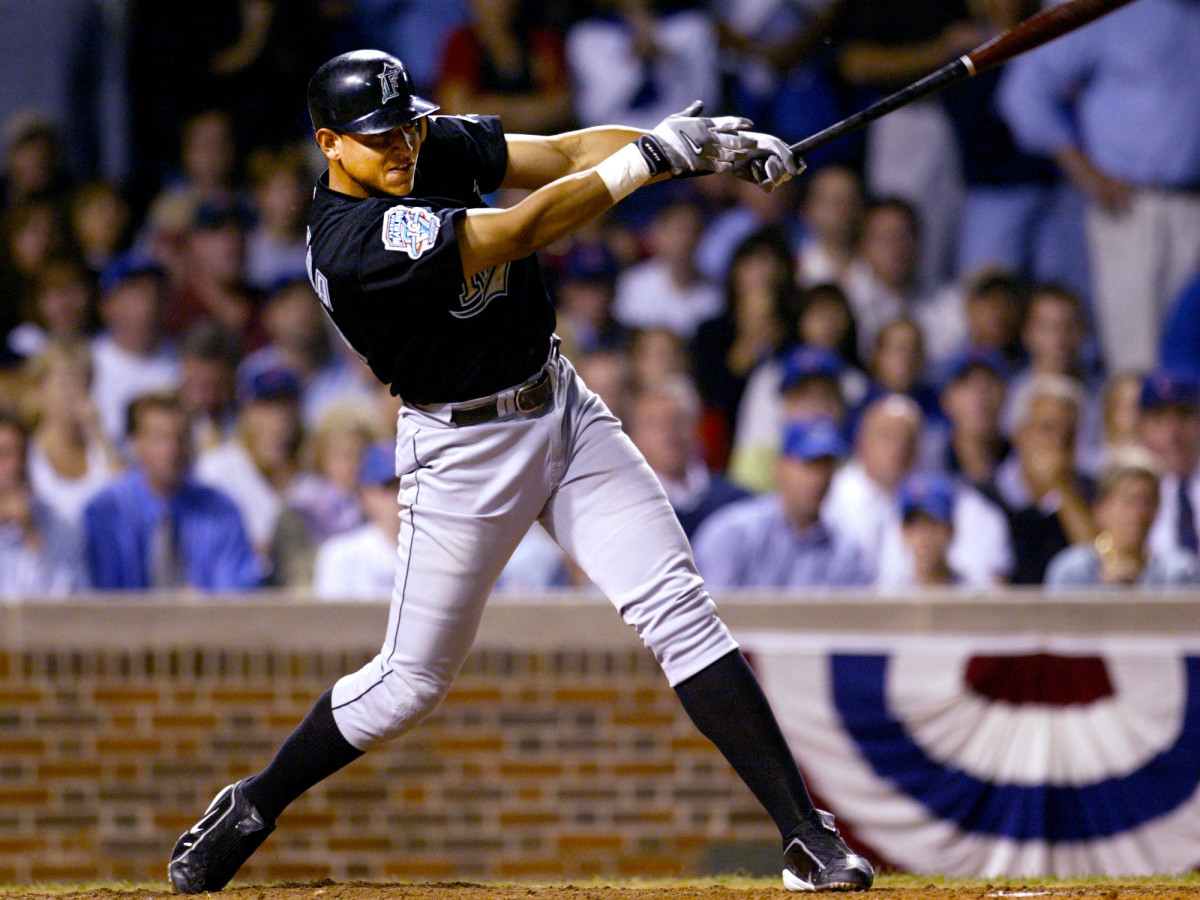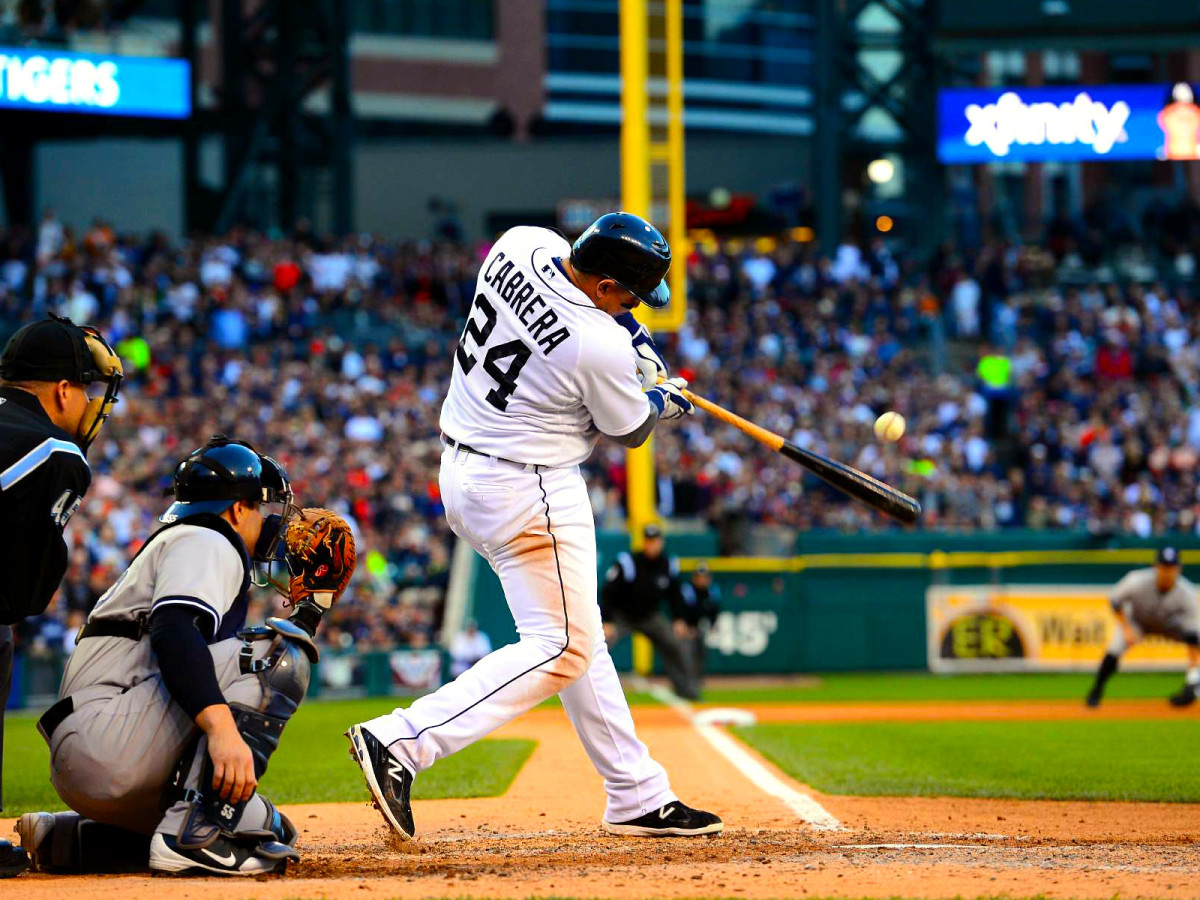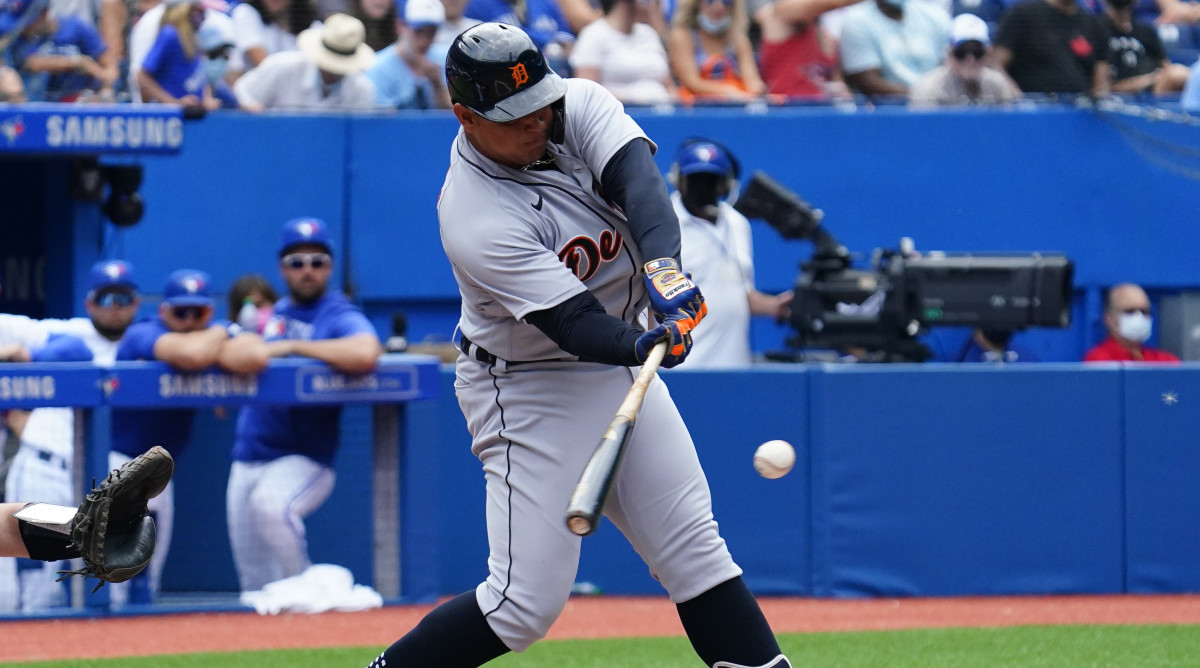Miguel Cabrera's Swing Stands Up to Father Time

For a sport so attached to the fact that it does not have a clock, baseball is notably, systematically attached to time. It’s impossible to escape. An element of time is built into some of the most basic measurements here; it’s in the way that players are evaluated; it’s in the language that the game uses to discuss roster construction. Even if the clock is not on display, it’s always, always ticking. The streak will end, the weather will turn, the center fielder will lose his speed. It’s hard to find timelessness here: There are precious few places in baseball where you can think about forever.
And then there is Miguel Cabrera’s swing.

This is where the clock has a chance to stop. It's running when you watch him try to jog out a ground ball, and it's running when you think about the length of his contract, and it's running all around him, all the time, in general. But when he swings? There’s the escape hatch. It doesn’t open on every plate appearance, not anymore, but it opens up often enough. It’s not a time machine so much as it is an entryway into a place where time has no meaning. Because how do you watch the best of that swing—with that power, that fluency, that sheer talent—without imagining that he could do this forever?
Cabrera’s 500th home run on Sunday was a reminder of just how long he’s been doing this. It was also a reminder of just how natural he can make it all look. The decisive shot was not outwardly marked by anything special—to right-center in Toronto, tying the game in the sixth inning, on a changeup delivered to him by Steven Matz. But it looked so automatic as to be totally straightforward, almost instinctive, which is to say that it looked like so many of the hundreds that came before.

It’s reductive to say that anyone is born to hit home runs. It glosses over the incredible work and effort required for even the most natural of hitters, as many sluggers have pointed out, including Cabrera himself. “When you say something like, ‘He’s gonna hit a home run every time he’s at the plate,’ people believe that,” he told SI during his Triple Crown season in 2012. But if it isn’t quite fair to say that Cabrera was born to do this, perhaps it’s enough to say that he was as close as anyone could get, and he always made it easy for you to believe that he might as well have been.
This felt true when he had his first 30-home run season back in 2004, and when he won the Triple Crown in 2012, and when he entered Club 500 on Sunday. The other parts of Cabrera’s game have waxed and waned according to the principles of any reasonable aging curve. Yet his power—in games, in batting practice, on good teams and on bad ones—has always felt like it might be a doorway to forever.
The 500 Home Run Club is a marker of consistency almost as much as it is one of greatness. It’s not enough to be brilliant. A hitter has to be so regularly, for at least a decade, probably close to two. (There’s a reason the club is so exclusive.) Cabrera, as much as anyone in recent memory, embodied those twin pillars of consistency and greatness. He was a presence on MVP ballots in every season from 2003 to 2016. He has won multiple batting titles and multiple home run titles and hardware of every kind. He did not make so much as a brief trip to the injured list until he was already in his mid-30s. He sits on the brink of 3,000 hits (2,955) and will likely become just the seventh player to reach both that milestone and 500 home runs. He was among the very best of a generation, and he made it look routine.

The gap between Cabrera’s 499th home run and his 500th might have felt somewhat lengthy—11 days. That’s tied with Mickey Mantle for the third-longest wait among players who hit both in the same season. As the days wore on, Cabrera’s plate appearances began to feel a little less exciting and a little more tense, fraught with expectation. Each one started to recall his quote from the Triple Crown excitement in 2012: When you say something like, ‘He’s gonna hit a home run every time he’s at the plate,’ people believe that.
But on Sunday, he made that belief seem not just reasonable but necessary. He swung and made contact, and as the ball carried, it was clear: Miguel Cabrera had found forever.
More MLB Coverage:
